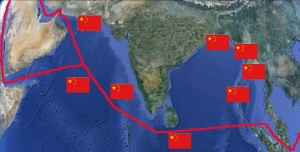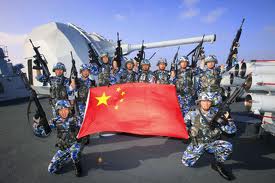
Union Petroleum Minister Mani Shankar Aiyar with the President of China National Petroleum Corporation, Chen Geng in Beijing on January 13.
In 2006 the India’s Petroleum Minister Mani Shankar Aiyar and the Head of the National Reform and Development Commission Ma Kai, (the chief economic for planning and energy minister),signed an agreement “aimed at preventing the two nations’ competition for oil assets pushing up prices.[…]Co-operation between China and India could benefit international energy companies by reducing the ferocity of the bidding.[…]Under their agreement, Chinese and Indian oil companies will establish a formal procedure to exchange information about a possible bid target, before agreeing to co-operate formally”(source: Financial Times)(read also: China Daily; Asian Times.
In the 18th century China and India accounted for half of world economy (source: The Economist). Then they’ve been surprised by the Western economic and scietific model and fell in disgrace. What’s happening today is just the re-equilibrium of forces. The combined population, industrial output and economic growth will make the two defining axis of the future.
And they are already trying to understand each other, because the confrontation will be though and every move will count towards vital interests. They are too big, too close. They cannot fight each other directly,but they cannot simply coexist. They are too big, too close to peacefully play the boy-scouts. Any rise in one’s prestige, influence and power is inversely affecting the other. They will benefit each other, but they can’t just mind their own business.
Recently they showed a series of reciprocal disturbances, with China even sending patrols inside the Indian borders of the Himalaya. At the moment they are playing the game of mutual encirclement. India is warming its relationships with Japan and Korea via USA, its also courting Vietnam for cooperation in the South China Sea, with much disappointement by Beijing. On the other front, China is cementing a military and industrial partnership with Pakistan. It became also an essential partner for Sri Lanka. Not only economically, president Rajapakse owns everything to Beijing.
Maybe it will be only competition rather than confrontation, but China and India are rising the stake on each other.


















